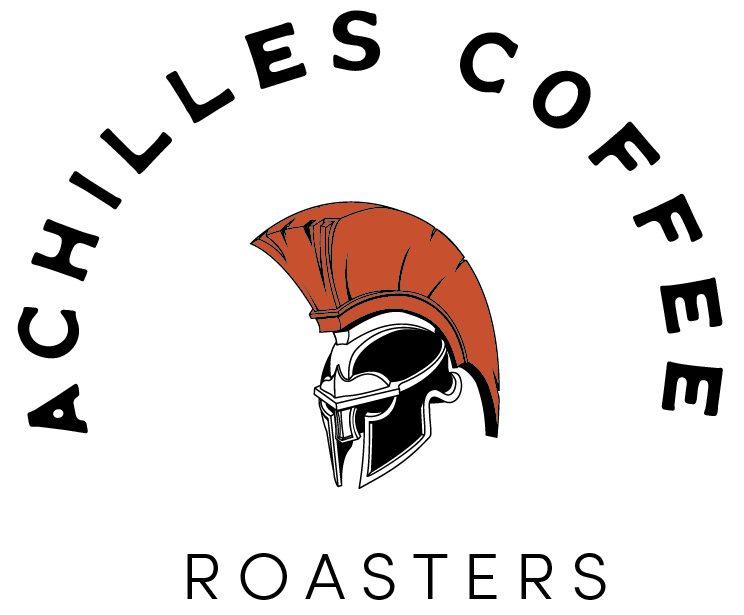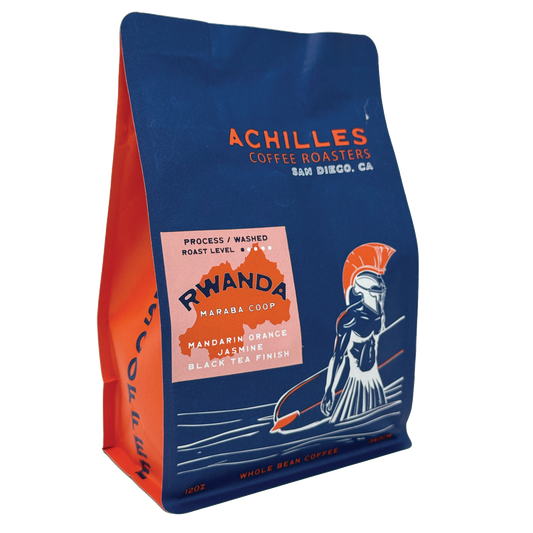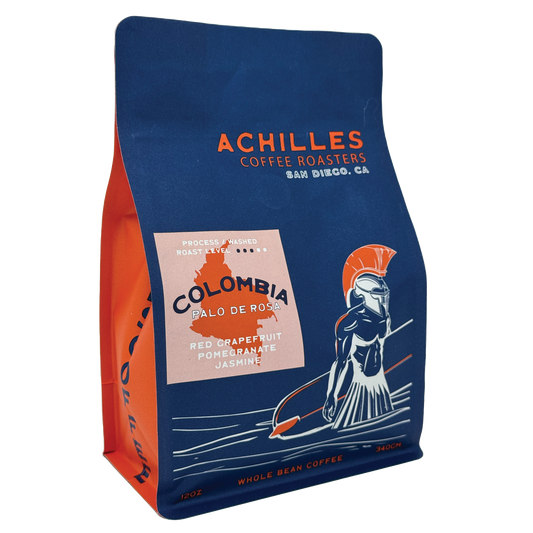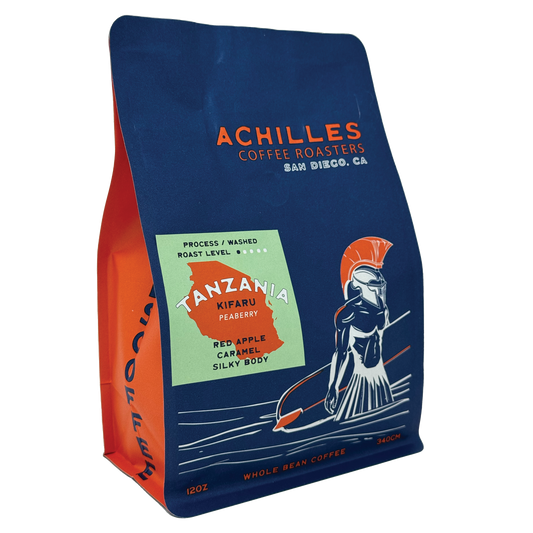Coffee is a global beverage, enjoyed by millions daily—but not all coffee is created equal. Beyond the familiar blends and single origins lies a world of micro-lot coffees: small, meticulously produced batches that showcase unique and often astonishing flavors. These rare varieties give coffee lovers a chance to taste the extraordinary.
In this guide, we’ll explore:
-
What micro-lot coffee means
-
Why these small batches produce such distinct flavors
-
Examples of standout rare varieties
-
How to source, brew, and appreciate micro-lot coffees at home
Let’s dive into the world of micro-lot treasures—because your next favorite cup might just come from a farm’s smallest lot.
What Is Micro-Lot Coffee?
Definition
Micro-lot coffee is a term that refers to a small, carefully managed, and uniquely distinct section of a coffee farm. Unlike mass-produced coffee that’s harvested and processed in large batches, micro-lots are treated as special, limited-edition lots—often representing the very best or most experimental coffees a farm can offer.
Key Characteristics of Micro-Lot Coffee:
-
Specific Varietals or Experimental Hybrids:
Micro-lots often feature rare or unique coffee varietals, including heirloom or newly developed hybrids that showcase unusual flavor profiles. Farmers may dedicate a small area to a particular varietal to observe its potential or highlight its distinct characteristics. -
Unique Microclimates:
These small plots usually grow in special microclimates—such as high-altitude terraces, shaded forest canopies, volcanic soils, or regions with distinct rainfall patterns. These environmental factors contribute to the complexity and uniqueness of the coffee’s flavor. -
Meticulous Care and Attention:
From planting to harvest, micro-lots receive extra attention and care. This includes selective handpicking of only the ripest cherries, careful sorting to remove defects, and custom processing techniques tailored specifically to that lot. Processing may vary from washed, natural, honey, or experimental methods to enhance or emphasize particular flavor notes.
Production Scale:
Because of the focused care and the small size of the plots, micro-lot production yields are very limited—typically fewer than 50 bags (a bag is usually 60 kilograms or about 132 pounds). Some micro-lots are even smaller, producing only a few dozen pounds of coffee.
This rarity often results in higher prices and greater exclusivity, appealing to coffee enthusiasts and specialty roasters who seek unique, high-quality, and traceable coffees with distinct stories behind each lot.
Why Micro-Lot Coffee Matters:
Micro-lots represent the pinnacle of coffee quality and craftsmanship. They allow producers to experiment with growing and processing methods, push the boundaries of flavor, and bring consumers closer to the origin and personality of the coffee. For coffee lovers, micro-lots offer the chance to taste truly unique coffees that stand apart from commodity blends, often revealing new and exciting flavor profiles.
Why Micro-Lot Coffees Are So Special
Unique Terroir
Just like fine wine, coffee is deeply influenced by the environment where it’s grown—known as terroir. Micro-lots often come from very specific, limited sections of a farm where factors like soil composition, sun exposure, rainfall patterns, and elevation combine to create distinctive flavor profiles. This unique terroir imparts nuances and complexities to the coffee that larger, blended lots cannot replicate, allowing you to taste the character of a particular place in every cup.
Precision Farming and Meticulous Care
Micro-lots benefit from an extraordinary level of attention throughout the growing and processing stages. Farmers hand-select only the ripest, highest-quality cherries from these special plots, ensuring peak flavor potential. In addition, producers frequently experiment with innovative processing methods tailored to the micro-lot’s characteristics—such as honey processing, natural (dry) processing, or even advanced anaerobic fermentation techniques. These precise and often experimental methods bring out unique aromas and flavor notes. Furthermore, the beans from micro-lots are typically sorted multiple times to ensure uniformity and remove defects, which helps guarantee a consistently high-quality final product.
Traceability and Transparency
One of the hallmarks of micro-lot coffee is the high level of traceability it offers. Unlike commodity coffees, where origins are often vague or blended from multiple farms and regions, micro-lot coffees come with detailed information about:
-
The exact farmer or cooperative responsible for the lot
-
The specific coffee varietal grown
-
The processing method used to transform the cherries into green beans
-
The altitude and geographical region where the coffee was cultivated
This transparency allows roasters and consumers to build a deeper connection with the coffee’s story and origin. It also supports ethical sourcing by ensuring that farmers receive credit and fair compensation for their work.
Rare and Exotic Varietals
Micro-lots are often the home for rare, heirloom, or experimental coffee varietals that are too delicate or low-yield to be cultivated on a large scale. Examples include famous varieties like Geisha, known for its floral and jasmine notes; SL28, prized for its balanced acidity and sweetness; Sudan Rume, with its complex fruity flavors; or Pink Bourbon, a visually striking and flavorful variety. These varietals often flourish in micro-lots because the small-scale, careful farming allows farmers to manage their unique needs and showcase their exceptional qualities.
In Summary
Micro-lot coffees represent the art and science of coffee farming at its finest. They are special because they capture the essence of a specific place and moment, nurtured by expert farmers who apply precision techniques and innovative processes. For coffee lovers, micro-lots offer an opportunity to experience truly unique, high-quality coffees that go beyond the ordinary—each cup telling a story of passion, place, and craftsmanship.
Examples of Rare Micro-Lot Coffees and Their Flavors
How Micro-Lot Coffees Are Processed
Panama Geisha
Region: Boquete or Volcán, Panama
Profile: Panama Geisha is renowned for its exceptionally delicate and complex flavor profile. It often features floral notes such as jasmine, bright citrusy bergamot, and hints of tropical fruit. The body is typically light and tea-like, creating an elegant and refined cup experience.
Why it’s rare: Geisha is a low-yielding varietal that requires very specific growing conditions, usually high-altitude farms with cool temperatures and unique soil compositions. It is notoriously difficult to cultivate and process correctly, which contributes to its exclusivity and premium price.
Colombian Pink Bourbon
Region: Huila or Tolima, Colombia
Profile: Pink Bourbon is known for its vibrant red fruit flavors, floral sweetness, and a silky smooth mouthfeel. It often offers notes reminiscent of berries, complemented by a delicate sweetness that balances acidity and body.
Why it’s rare: This varietal is a natural hybrid with a unique pinkish cherry color, making it visually striking. However, it is challenging to cultivate consistently due to its susceptibility to disease and the need for precise growing conditions. Its rarity and unique flavor make it a sought-after micro-lot.
Ethiopian Heirloom Micro-Lots
Region: Yirgacheffe, Guji
Profile: Ethiopian heirloom coffees, especially from regions like Yirgacheffe and Guji, display complex layers of blueberry, lemon, and floral notes. They are prized for their bright, lively acidity and intricate flavor complexity, often enhanced by traditional natural or washed processing.
Why it’s rare: These coffees come from wild, indigenous varietals grown by smallholder farmers on small plots. The use of traditional, often natural processing methods adds to their unique character. The limited scale and reliance on heritage farming practices contribute to their scarcity.
Kenyan SL28 or SL34 Micro-Lots
Region: Nyeri, Kirinyaga
Profile: Kenyan micro-lots of SL28 or SL34 varietals are celebrated for their vibrant blackcurrant and grapefruit flavors, bright and crisp acidity, and a syrupy, full-bodied mouthfeel. They deliver a clean, juicy cup with a distinctive fruit-forward profile
Why it’s rare: These varietals require labor-intensive cultivation and very selective handpicking to ensure quality. The processing methods, often wet-processed with precise fermentation times, add complexity but require careful attention, limiting large-scale production.
Micro-lots often showcase innovative or artisanal processing methods that go beyond traditional coffee preparation to highlight and enhance unique flavor characteristics. These specialized processing techniques are carefully chosen and executed to bring out the best in the coffee’s natural profile, adding complexity and depth to the final cup.
- Honey Process: In this method, the coffee cherries are partially washed so that some of the mucilage—the sticky, sugary layer surrounding the bean—is left intact during drying. This retained mucilage imparts a natural sweetness and body to the coffee, often resulting in a rich, syrupy mouthfeel with notes of caramel, fruit, and honey-like flavors. The honey process strikes a balance between the clean brightness of washed coffees and the intense fruitiness of natural processes.
- Natural (Dry) Process: Natural processing involves drying whole coffee cherries under the sun without removing the fruit flesh first. This method allows the sugars and flavors from the fruit to permeate the bean, creating bold, fruity, and often wine-like flavor notes. Coffees processed naturally tend to have heavier body, pronounced berry or tropical fruit flavors, and a distinctive sweetness, making them highly sought after for their unique taste profiles. However, natural processing requires careful monitoring to avoid off-flavors caused by over-fermentation or mold.
- Anaerobic Fermentation: This is an advanced and experimental processing technique where coffee cherries or beans are fermented in a controlled environment without oxygen, often sealed in airtight tanks. The lack of oxygen alters the microbial activity during fermentation, producing unusual and complex flavor compounds not typically found in conventional processing. Anaerobic fermentation can create vibrant acidity, floral or funky notes, and an overall heightened complexity. It is a cutting-edge approach favored by some micro-lot producers pushing the boundaries of flavor innovation.
- Washed (Wet) Process: The washed process involves removing the fruit pulp and mucilage from the coffee cherries before drying the beans. This method typically results in a clean, crisp cup that clearly expresses the coffee’s terroir—the environmental factors like soil, altitude, and climate. Washed coffees are known for their clarity, brightness, and vibrant acidity, making them a favorite among those who prefer a lighter, more delicate flavor profile that highlights the origin characteristics.
Processing methods add an important additional layer to the coffee’s final flavor and aroma, giving micro-lots their distinctive personality. The choice of process is often as deliberate and nuanced as the choice of varietal or growing location, contributing to the extraordinary diversity and richness found in specialty micro-lot coffees.
How to Brew Micro-Lot Coffee at Home
When you get your hands on a rare micro-lot coffee, it’s important to treat it with the care and attention it deserves to fully appreciate its unique flavors and complexities. Brewing micro-lot coffee isn’t just about making a cup—it’s about creating an experience that highlights the subtle nuances that set these coffees apart.
Grind fresh just before brewing using a quality burr grinder. The burr grinder allows for a consistent grind size, which is essential for even extraction. Make sure to adjust your grind size to match your chosen brew method—finer for espresso or AeroPress, medium for pour-over, and coarser for French press.
Use precise water temperature between 195 and 205°F (90–96°C). Water that is too hot can over-extract and bring out bitterness, while water that’s too cool can under-extract, leaving your coffee sour or weak. A temperature-controlled kettle or thermometer is a worthwhile investment for this level of precision.
Weigh your coffee and water carefully to maintain an optimal brew ratio, usually between 1:15 and 1:16 (coffee to water by weight). This balance helps ensure the coffee’s natural sweetness and acidity come through clearly without being overwhelmed or diluted.
Choose a brew method that emphasizes clarity and delicacy—such as pour-over (Hario V60, Chemex), AeroPress, or siphon brewing. These methods highlight the micro-lot’s complex flavors and aromatics better than immersion brews or automatic drip machines.
Use filtered water free of chlorine, odors, or impurities that could mask the coffee’s subtle flavor profile. Good water quality is critical to unlocking the full potential of specialty coffees.
A final tip: micro-lots shine when brewed slowly and mindfully. Rushing through the process—whether it’s pouring too quickly or skipping steps—risks muting their delicate notes and vibrant character. Take your time, savor the aromas during brewing, and enjoy the journey from bean to cup.
By paying close attention to these details, you’ll bring out the best in your micro-lot coffee and experience its rare qualities to the fullest.
FAQs About Micro-Lot Coffees
Why do micro-lot coffees cost more?
Micro-lot coffees are priced higher primarily due to their limited production and the exceptional level of care involved in growing, harvesting, and processing them. Because micro-lots come from small, carefully tended plots, yields are much lower than standard commercial coffee. Farmers invest significant time and effort in selective handpicking, multiple rounds of sorting, and often experimental or labor-intensive processing methods. This craftsmanship, combined with the rarity and exclusivity of these coffees, drives up the cost. Essentially, when you buy a micro-lot, you’re paying for a unique and premium sensory experience that’s difficult to replicate on a larger scale.
Do micro-lot coffees taste better than regular coffee?
Micro-lots don’t necessarily taste “better” in a universal sense, but they often offer more distinctive, refined, and complex flavor profiles compared to commodity or mass-produced coffees. Because of their unique terroir, varietals, and specialized processing, micro-lot coffees tend to highlight nuanced tastes—such as floral, fruity, or exotic notes—that might be muted or absent in larger blends. Whether a micro-lot coffee is “better” is subjective and depends on personal preference, but for many enthusiasts, these coffees provide a richer and more memorable tasting experience.
Are micro-lot coffees sustainable?
Many micro-lot producers prioritize sustainable agriculture practices, as their reputation and market depend heavily on consistent quality and ethical sourcing. These farmers often focus on environmental stewardship—such as shade-grown coffee, organic farming, biodiversity conservation, and fair labor practices—to maintain soil health and community well-being over the long term. However, sustainability can vary widely between farms and regions. It’s always a good idea to check for certifications like Rainforest Alliance, Organic, or Fair Trade, or to seek out roasters and producers who offer clear sourcing transparency and sustainable commitments.
How can I identify a true micro-lot coffee?
A genuine micro-lot coffee is typically well-documented by the roaster or producer, including detailed information on the farm, specific plot, varietal, processing method, and sometimes even the farmer’s name. It’s usually offered in limited quantities and often marketed as a single-origin or single-plot coffee. Transparency and traceability are key indicators that you’re purchasing a true micro-lot.
Are micro-lot coffees only available at specialty coffee shops?
While micro-lot coffees are primarily found through specialty roasters and coffee shops that focus on high-quality, traceable beans, they are increasingly available online from direct trade roasters. These roasters often import small batches directly from producers to maintain freshness and control quality. However, micro-lots are less common in mainstream grocery stores due to their limited production and higher price point.
Do micro-lot coffees require different brewing techniques?
Brewing micro-lot coffees doesn’t necessarily require different equipment, but it does benefit from more careful preparation. Since these coffees often have delicate and complex flavor profiles, using precise grind size, water temperature, and brew ratios helps highlight their unique characteristics. Manual brew methods like pour-over, AeroPress, or siphon are popular choices to bring out clarity and subtlety.
Can micro-lot coffees vary between harvests?
Yes, micro-lot coffees can vary significantly from year to year due to changes in weather, farming practices, and processing techniques. This variability is part of what makes micro-lots exciting—each harvest can offer a new flavor experience that reflects that specific growing season and environmental conditions.
Is it worth investing in micro-lot coffee if I’m new to specialty coffee?
While micro-lot coffees can be more expensive, they offer an excellent opportunity to explore the depth and diversity of specialty coffee. If you’re curious and enjoy tasting new flavors, micro-lots provide a rewarding way to develop your palate and appreciation for coffee. Starting with small amounts or sample packs can make this exploration more accessible.
Conclusion: The Magic of Micro-Lots
Micro-lot coffees provide a unique and intimate window into the incredible diversity and complexity of the coffee world. Unlike mass-produced blends, each micro-lot tells a distinct story shaped by its specific origin—capturing the nuances of its unique terroir, the dedication of the farmers who nurture it, and the innovative methods used to bring out its best qualities. These coffees reflect not just a beverage, but a craft rooted in passion, tradition, and meticulous care. For those ready to deepen their appreciation and explore the farthest reaches of coffee flavor, micro-lots offer an exciting and rewarding journey. They invite you to savor rare varietals, experience extraordinary flavors, and connect more deeply with the art and science of coffee. Whether you’re a seasoned coffee lover or just beginning to explore specialty coffee, micro-lots are a perfect place to start discovering the endless possibilities that a single cup can hold.








